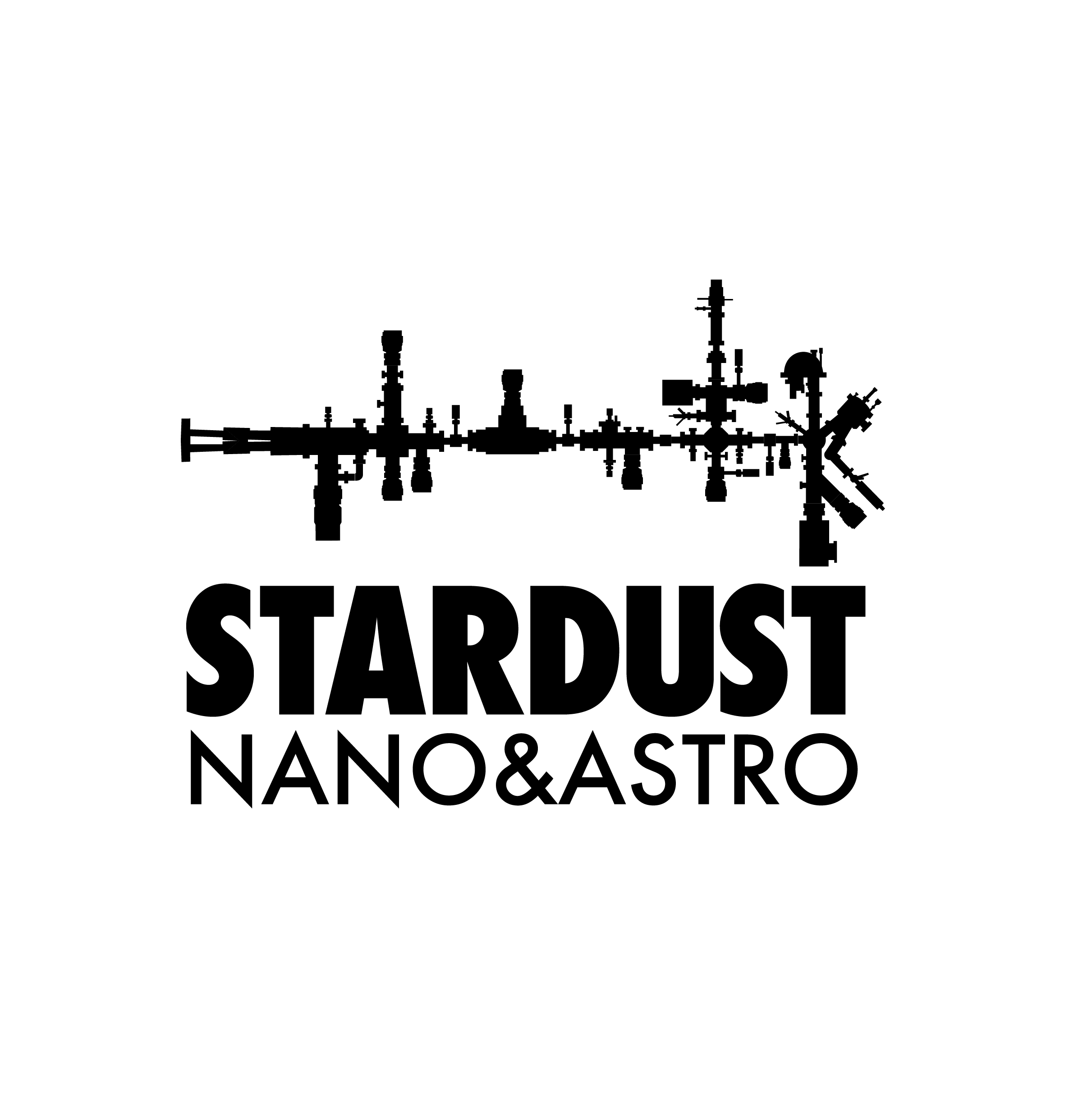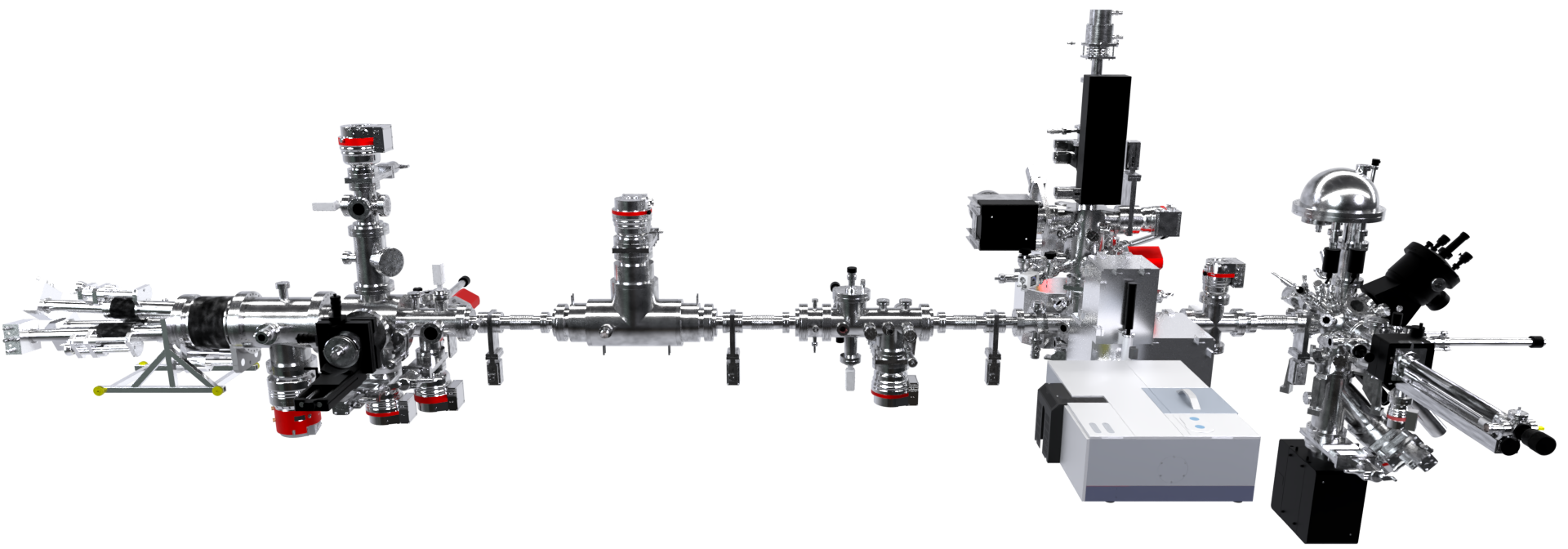
Technical Details
The Stardust machine is a state-of-the-art experimental station that combines various techniques to conduct original studies on nanoparticles. Stardust is equipped with cutting-edge in situ diagnostics.
In an astrochemical context, Stardust is used to study the formation of nanocosmic dust grains in evolved stars, as well as their processing and evolution toward the interstellar medium and molecular clouds, where dust grains are coated with molecular ices.
Stardust can also be used for nanoscience to produce and characterize well-controlled nanoparticles with complex architectures and tuned stoichiometry, with applications in catalysis, sensors, and plasmonics.
Stardust presents a modular concept, consisting of six different vacuum modules working in ultra-high vacuum conditions (base pressure 10^-10 mbar). Each module serves a specific purpose, detailed below, along with technical specifications.
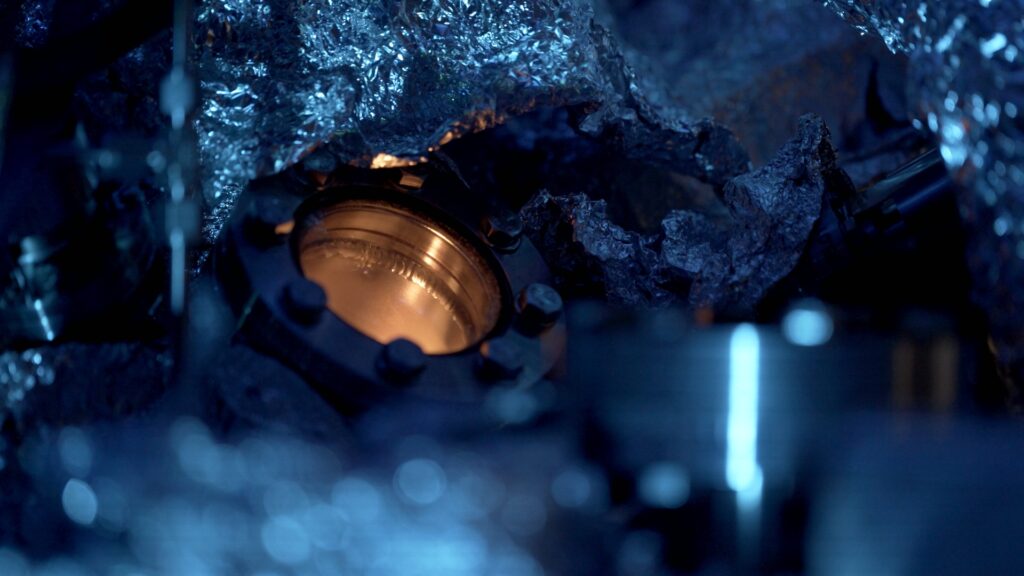
MICS
The MICS module is dedicated to the fabrication of nanoparticles in the gas phase from atomic precursors. It is a sputtering gas aggregation source (SGAS) that incorporates three independent magnetron sputter sources. As the magnetrons can be positioned independently of each other, complex nanoparticle architectures can be designed and fabricated (pure, alloys, core-shell, and core-shell-shell nanoparticles). In addition, special gas inlets to the aggregation zone are available to inject reactive gases, ensuring that these gases do not participate in the sputtering process. Once the nanoparticles are formed, they are extracted by differential pumping, producing a beam of nanoparticles that travels along the rest of the machine.
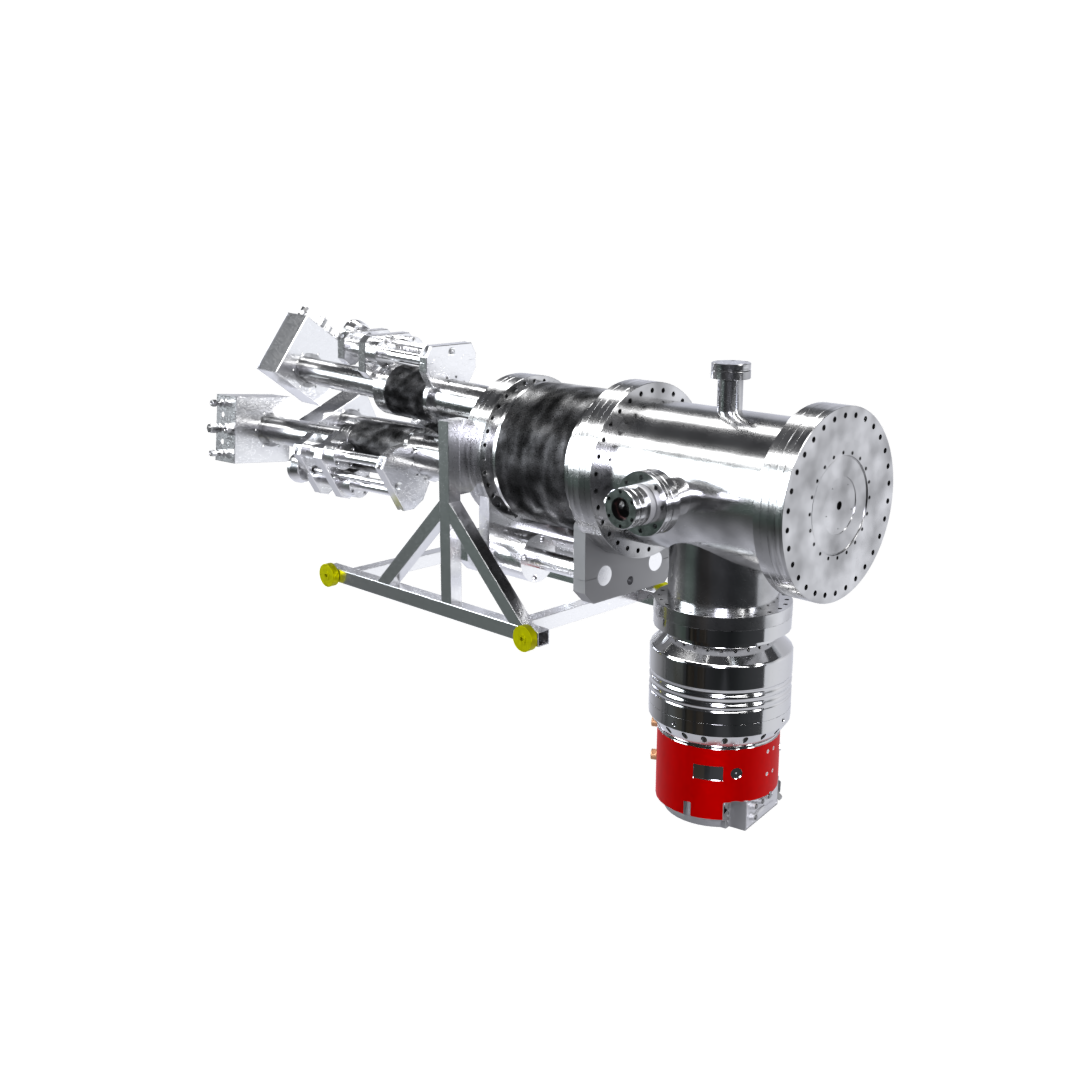
DIAGNOSIS
The next module is dedicated to diagnosing the nanoparticle beam. DIAGNOSIS houses a Quartz Crystal Microbalance, a Quadrupole Mass Spectrometer (0-100 amu), and a sample entrance that can be used to collect nanoparticles on arbitrary substrates. In addition, a Quadrupole Mass Spectrometer with a range of up to 106 amu is mounted perpendicular to the nanoparticle beam. In this way, by deflecting a small fraction of charged nanoparticles using a specially designed electrostatic quadrupole deflector, the nanoparticle size can be determined.
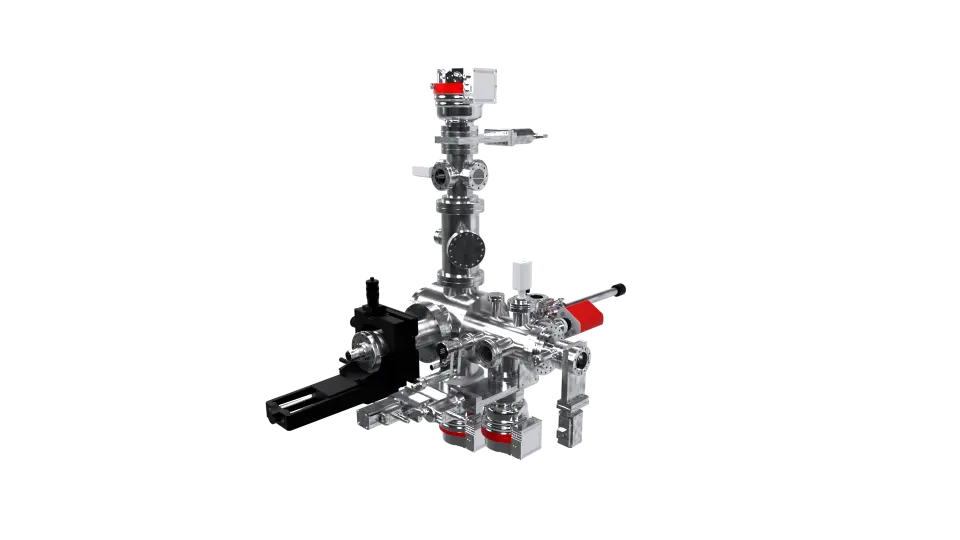
OVEN
The OVEN module is devoted to in-flight heating of the particle beam to temperatures of up to 1400 K via three 2 kW infrared lamps. This setup allows reaching temperatures similar to those found in the dust formation zone of AGBs. Two copper disks have been installed at the entrance and exit of the module. They work as a diaphragm to allow the flow of the nanoparticles beam; meanwhile, the IR radiation is reflected by the disks’ surface, so no radiation travels to the other modules.
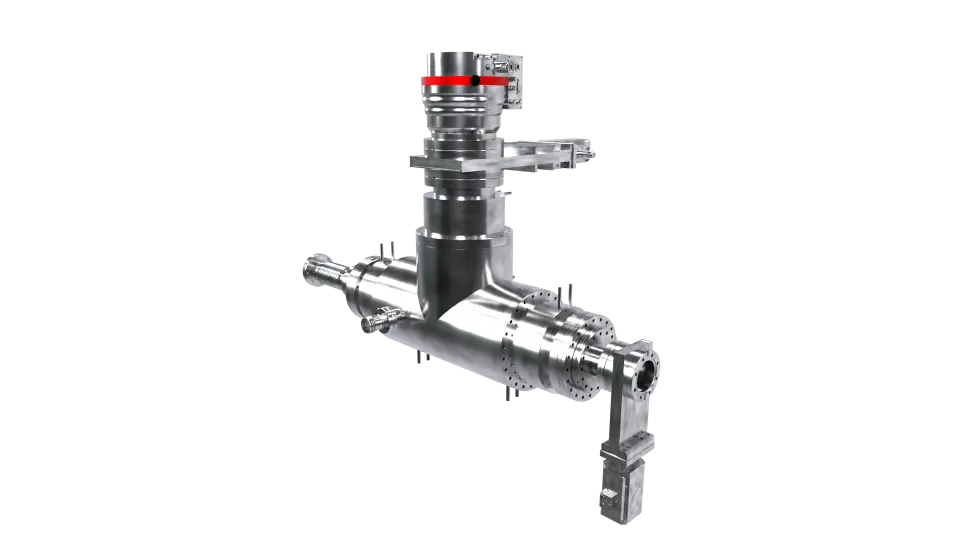
ACCELERATION
This module is dedicated to the manipulation of the nanoparticle beam through electromagnetic optics. At the entrance of ACCELERATION, the nanoparticles pass through an ionizer. Subsequently, the nanoparticles are focused and accelerated by a set of Einzel lenses, and afterward, they can be neutralized using a low-energy electron gun. Finally, deflection plates are available to remove the fraction of nanoparticles which has not been neutralized.
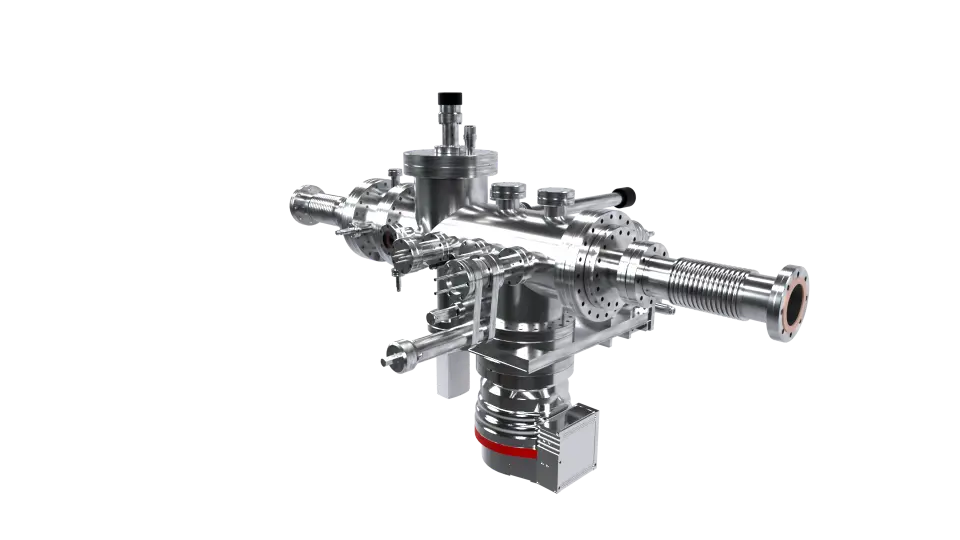
INFRA-ICE
The INFRA-ICE module consists of two vertically connected UHV chambers and is dedicated to characterizing the nanoparticles by IR spectroscopy. It is also possible to process the nanoparticles and grow molecular ices by gas deposition at low temperatures. To this end, INFRA-ICE is equipped with a closed-cycle He cryostat capable of operating from room temperature down to 14 K.
The lower chamber is aligned with the nanoparticle beam and can be used to collect nanoparticles produced in the MICS module. In this chamber, it is also possible to perform IR spectroscopy in reflection-absorption geometry (Infrared Reflection-Absorption Spectroscopy; IRRAS).
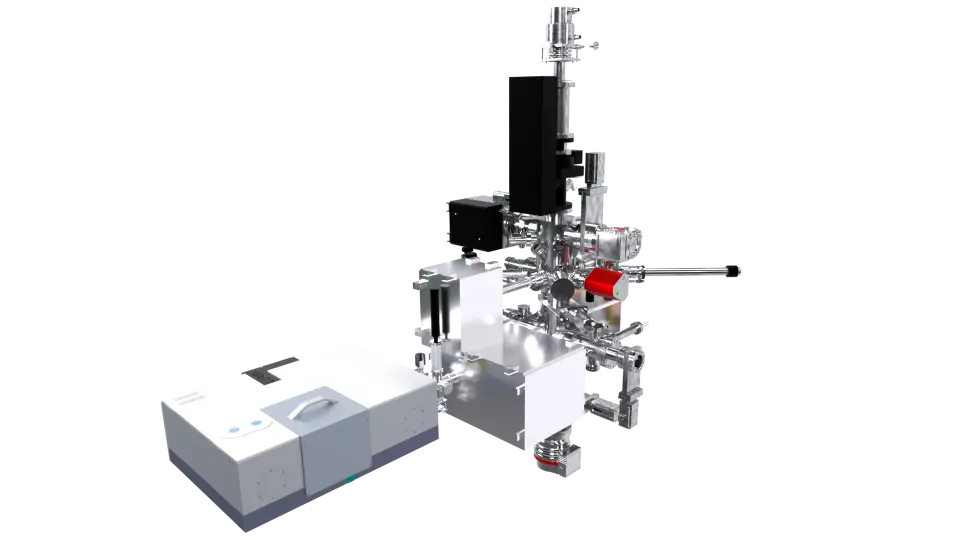
The upper chamber is dedicated to growing molecular ices and energetic processing. A range of processing equipment is installed in this chamber: a UV hydrogen discharge lamp (main wavelength: hydrogen Lyman alpha line at 121.6 nm), a low-energy electron gun (0-500 eV), an ion gun (0-6 keV), an atomic H thermal source, and an atomic O thermal source. Processing can be conducted in situ and concurrently monitored by IR spectroscopy in transmission geometry. A Quadrupole Mass Spectrometer (0-200 amu) is also available, with direct view of the sample, to perform thermal programmed desorption.
ANA
The last module of Stardust is dedicated to the analysis of nanoparticles. Here, nanoparticles can be deposited on arbitrary substrates, and their chemical composition can be characterized using electron spectroscopies (XPS, UPS, AES). The substrates are mounted on a heated 4-axis sample manipulator with heating capabilities up to 1000 K, allowing for the performance of thermal programmed desorption (TPD) using a high-sensitivity quadrupole mass spectrometer (0-512 amu). The processing equipment available in INFRA-ICE can also be incorporated into this module to process the nanoparticles (UV, ion bombardment, atomic H, and atomic O exposure), both at room and high temperatures.
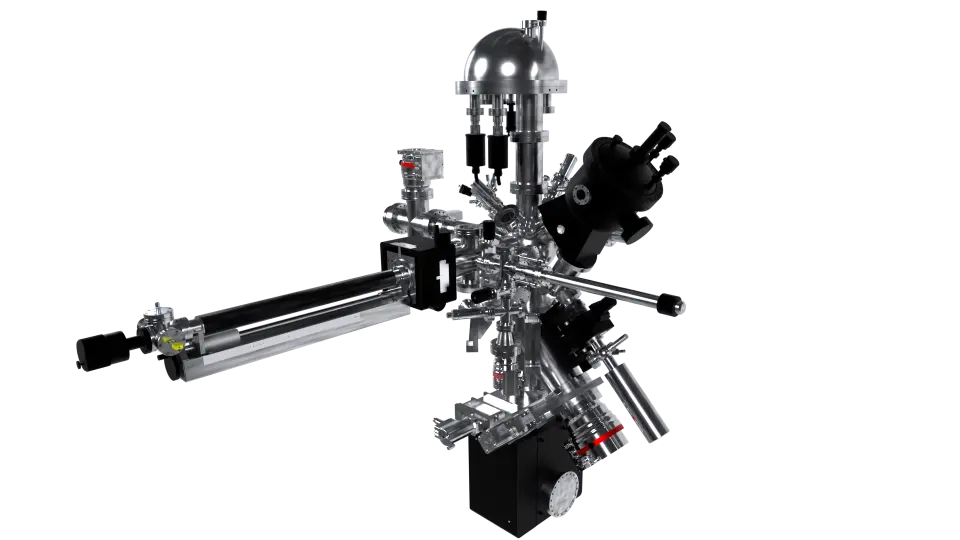
Selected bibliography
- J. Sobrado, G. Santoro, L. Martínez, P. Merino, C. Joblin, J. Cernicharo and J. A. Martín-Gago, “The Stardust Machine Project”. In: Mennella, V., Joblin, C. (eds) European Conference on Laboratory Astrophysics ECLA2020. ECLA 2021. Astrophysics and Space Science Proceedings, 59, 101 – 110 (2023). https://link.springer.com/chapter/10.1007/978-3-031-29003-9_12
- G. Santoro, J. M. Sobrado, G. Tajuelo-Castilla, M. Accolla, L. Martínez, J. Azpeitia, K. Lauwaet, J. Cernicharo, G. J. Ellis and J. A. Martín-Gago, “INFRA-ICE: an ultra-high vacuum experimental station for laboratory astrochemistry”, Rev. Sci. Instrum. 91, 124101 (2020). https://doi.org/10.1063/5.0027920
- L. Martínez, K. Lauwaet, G. Santoro, J. M. Sobrado, R. J. Peláez, V. J. Herrero, I. Tanarro, G. Ellis, J. Cernicharo, C. Joblin, Y. Huttel, and J. A. Martín-Gago “Precisely controlled fabrication, manipulation and in-situ analysis of Cu based nanoparticles”,Sci. Rep. 8, 7250 (2018). https://doi.org/10.1038/s41598-018-25472-y
